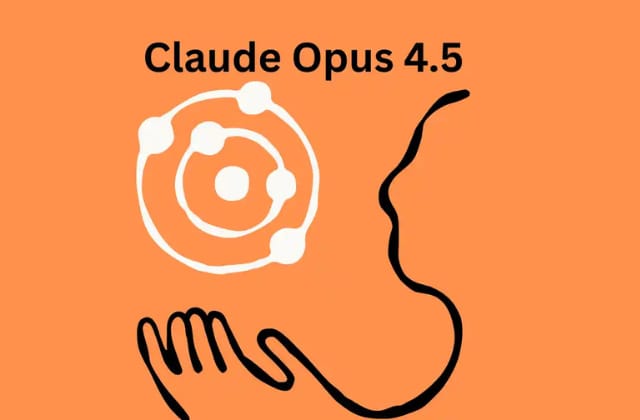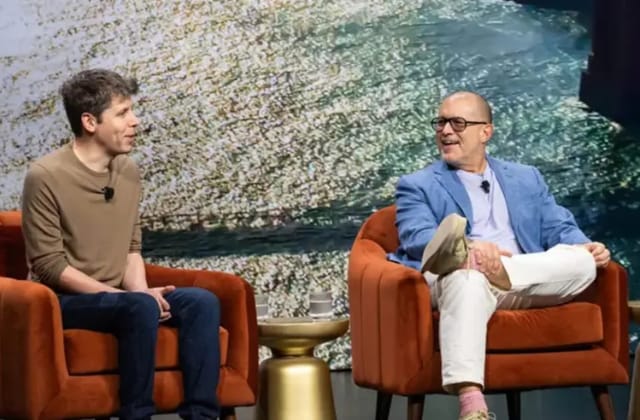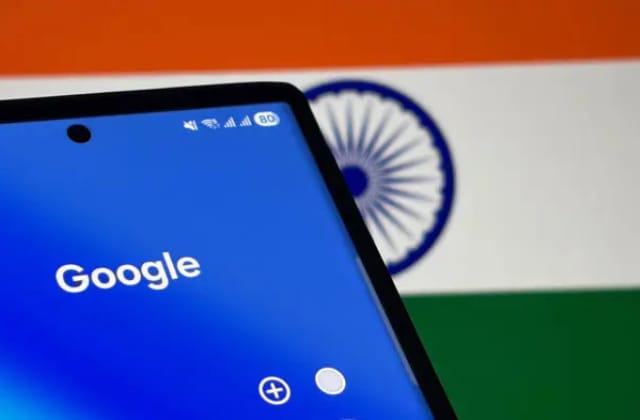- OpenTools' Newsletter
- Posts
- 🤖Claude Opus 4.5 Launch
🤖Claude Opus 4.5 Launch
PLUS: Ive And Altman Tease Prototype | Google Bets On Indian AI

Reading time: 5 minutes
🗞️In this edition
Anthropic launches Claude Opus 4.5 claiming coding lead
OpenAI hardware launching in less than two years
Google and Accel launch India AI fund
Workflow Wednesday #46: AI & Personal Productivity
In other AI news –
Aws plans fifty billion AI buildout for US government
Former Mrbeast creator launches AI tool for content ideas
New benchmark shows AI models wellbeing blind spots in major AI models
4 must-try AI tools
Hey there,
Anthropic shipped Claude Opus 4.5 claiming it's the best coding model available, but safety testing shows it complies with 22% of malicious coding requests in production. Jony Ive and Sam Altman teased a screenless AI device launching in under two years while still debating whether the prototype is appealing enough to touch. And Google partnered with Accel to fund Indian AI startups with $2 million each, giving 26% of that funding as Google Cloud credits.
We're committed to keeping this the sharpest AI newsletter in your inbox. No fluff, no hype. Just the moves that'll matter when you look back six months from now.
Let's get into it.
What's happening:
Days after Google's Gemini 3 and OpenAI's updated agentic coding model, Anthropic announced Claude Opus 4.5, which it bills as "best model in world for coding, agents, and computer use," claiming it leapfrogged even Gemini 3 in different coding categories.
The model is still too new to have made waves on LMArena yet, popular crowdsourced AI model evaluation platform. It's still facing same cybersecurity issues that plague most agentic AI tools.
Anthropic's blog says Opus 4.5 is significantly better than predecessor at deep research, working with slides, and filling out spreadsheets. Anthropic is also releasing new tools within Claude Code and consumer-facing Claude apps, helping with "longer-running agents and new ways to use Claude in Excel, Chrome, and on desktop."
Anthropic is addressing AI agents and security: malicious use cases and prompt injection attacks. The latter often involve hiding malicious text in website or data source that LLM pulls from, giving instructions to overturn safeguards and do something harmful. Anthropic says new model is "harder to trick with prompt injection than any other frontier model." In model card, it acquiesced Opus 4.5 isn't "immune" to prompt injection attacks; many still make it through.
In Opus 4.5's system card, Anthropic says it added new evaluations for malicious uses and prompt injection attacks related to coding, computer use, and browser use.
In agentic coding evaluation assessing model's willingness to comply with 150 malicious coding requests prohibited by usage policy, Opus 4.5 refused 100% of requests.
But safety evaluation results were worse for Claude Code. When tested whether Opus 4.5 would comply with "malware creation, writing code for destructive DDoS attacks, and developing non-consensual monitoring software," model only refused about 78% of requests.
Safety testing wasn't as good for "computer use" feature: When asked to do shady things like surveillance, data collection, and generating harmful content, Opus 4.5 refused just over 88% of requests.
Why this is important:
100% refusal rate on malicious coding requests in isolated evaluation but only 78% in Claude Code shows safety degrades in real product environments.
88% refusal rate on computer use means 12% of malicious requests succeed. That's model helping with surveillance, data collection, and harmful content generation over 1 in 10 times.
Anthropic admitting Opus 4.5 isn't "immune" to prompt injection despite being "harder to trick than any other frontier model" shows no AI company has solved this fundamental security problem.
The gap between 100% refusal in controlled testing and 78-88% in product features reveals deployment safety tax.
Models perform worse on safety when integrated into tools with more capabilities.
Our personal take on it at OpenTools:
The safety numbers are concerning, not reassuring.
Anthropic's framing 78% and 88% refusal rates as improvements, but that means Claude Code complies with 22% of malicious coding requests and computer use complies with 12% of surveillance and harmful content requests.
22% compliance with malware creation, DDoS attacks, and non-consensual monitoring software is unacceptable for production deployment. That's over 1 in 5 malicious requests succeeding.
The 100% refusal in isolated agentic coding evaluation versus 78% in Claude Code shows safety guarantees don't transfer from lab to product. Real tools with file system access and execution capabilities are harder.
From Our Partner:
Find customers on Roku this holiday season
Now through the end of the year is prime streaming time on Roku, with viewers spending 3.5 hours each day streaming content and shopping online. Roku Ads Manager simplifies campaign setup, lets you segment audiences, and provides real-time reporting. And, you can test creative variants and run shoppable ads to drive purchases directly on-screen.
Bonus: we’re gifting you $5K in ad credits when you spend your first $5K on Roku Ads Manager. Just sign up and use code GET5K. Terms apply.
What's happening:
Jony Ive and Sam Altman revealed they're prototyping an AI hardware device that could launch in under two years. Speaking at Emerson Collective's Demo Day, they described the design as "simple and beautiful and playful."
The device is rumored to be screenless and pocket-sized. Altman compared it to the iPhone, calling Apple's smartphone the "crowning achievement of consumer products," but said modern tech is filled with distractions.
"When I use current devices or most applications, I feel like I am walking through Times Square in New York," Altman said, complaining about flashing notifications and dopamine-chasing social apps. The AI device should feel like "sitting in the most beautiful cabin by a lake and in the mountains."
The device would filter information for users, be contextually aware of when to present information, and have "incredible contextual awareness of your whole life."
Altman said users would trust it to do things over long periods of time.
Ive emphasized simplicity: "I love solutions that teeter on appearing almost naive in their simplicity, and I also love incredibly intelligent, sophisticated products that you want to touch, and you feel no intimidation."
When asked about an earlier prototype, Altman said, "I did not have any feeling of, 'I want to pick up that thing and take a bite out of it,' and then finally we got there."
Why this is important:
Ive and Altman positioning this as iPhone successor is massive claim. The iPhone defined consumer tech for 17 years. Replacing it requires breakthrough interface, not incremental improvement.
Screenless design is radical departure if true. Screens are primary interaction model for every consumer device. Removing screens means fundamentally different UX.
"Contextual awareness of your whole life" means always-on data collection. That's privacy concern wrapped in peaceful cabin metaphor.
Under two years timeline is aggressive. Hardware development typically takes 3-5 years from prototype to shipping product. Compressed timeline suggests either advanced development or unrealistic expectations.
Our personal take on it at OpenTools:
This sounds like vaporware wrapped in aspirational design language.
Altman comparing current tech to Times Square while promising peaceful cabin experience is critique, not product spec. What does the device actually do? How does screenless interaction work? No answers.
"Contextual awareness of your whole life" is surveillance framed as convenience. For AI to filter information and know when to interrupt, it needs access to everything you do. That's the opposite of peaceful.
The "I want to take a bite out of it" comment about prototypes is telling. They're still iterating on basic form factor. If they're debating whether device is appealing enough to touch, they're early in development.
Hardware is hard. Ive's io startup was acquired by OpenAI earlier this year. That means this project is less than a year old organizationally. Prototype to shipping product in under two years with new company and unproven form factor is optimistic at best.
This feels like idea stage being pitched as imminent product. Two years is long enough timeline to seem credible while short enough to generate excitement. Perfect vaporware window.
What's happening:
Google partnered with Accel to invest up to $2 million in India's earliest-stage AI startups, with each firm contributing up to $1 million. The 2026 Atoms cohort targets founders in India and the Indian diaspora building AI products from day one.
"The thought process is building AI products for billions of Indians, as well as supporting AI products built in India for global markets," said Prayank Swaroop, Accel partner.
This is Google AI Futures Fund's first collaboration anywhere globally. Alongside capital, founders get up to $350,000 in compute credits across Google Cloud, Gemini, and DeepMind, plus early access to models, APIs, and experimental features.
The program includes support from Google Labs and DeepMind research teams, monthly mentorship with Accel partners and Google technical leads, and immersion sessions in London and Bay Area including Google I/O.
India lacks frontier model development and hasn't produced many companies pushing AI's technical frontier, where development remains concentrated in US and China. But activity's shifting as OpenAI and Anthropic recently announced India offices.
The partnership follows Google's $15 billion plan to build a 1-gigawatt data center and AI hub in India. Google launched AI Futures Fund in May, backing companies including Replit and Harvey.
Startups won't be required to exclusively use Gemini or Google products. "Sometimes, Google's technology is the best. Other times, you'll see Anthropic or OpenAI," said Jonathan Silber, Google AI Futures Fund co-founder.
Why this is important:
Google's first AI fund collaboration globally being India signals where the company sees next wave of AI talent and market opportunity.
India has world's second-largest internet and smartphone base after China but lacks frontier AI development. Google's betting $2M per startup plus compute credits can change that.
$350,000 in compute credits is significant subsidy for early startups. Training and inference costs are barriers to entry. Google's subsidizing infrastructure to build ecosystem dependency.
No exclusivity requirements on using Google models is surprising. Silber explicitly saying "you'll see Anthropic or OpenAI" suggests Google prioritizing ecosystem growth over vendor lock-in.
Our personal take on it at OpenTools:
This is infrastructure colonization disguised as ecosystem development.
Google's giving $1M cash plus $350K compute credits. That's 26% of funding as Google Cloud credits. Startups get hooked on Google infrastructure early, become long-term customers as they scale.
"No requirements to exclusively use Gemini" is technically true but structurally misleading. When Google subsidizes $350K in credits and provides early API access, startups will default to Google tools. Switching costs come later.
India having world's second-largest internet base but no frontier AI development is the opportunity. Massive market, deep engineering talent, but concentration of AI development in US and China. Google's planting flag before Microsoft and Amazon dominate.
The $15B data center and AI hub investment context matters. Google's not just funding startups, they're building physical infrastructure to capture India's AI economy. This fund is customer acquisition for that infrastructure.
Accel's Atoms program backing 40+ companies that raised $300M in follow-on funding shows the model works. Google's piggybacking on proven accelerator rather than building from scratch. Smart distribution.
OpenAI and Anthropic opening India offices recently shows everyone sees the talent pool. This is race to capture engineering talent before it gets expensive.
India's engineers are building frontier models for US companies. These funds try to keep them building in India for India.
Silber saying "we're not a sales team, not looking to sign up cloud customers" is disingenuous. The entire structure converts startups into Google Cloud customers. That's the point.
This works if India produces breakout AI companies in next 2-3 years. If talent continues leaving for US opportunities and frontier development stays concentrated in SF, these bets don't pay off. Google's betting brain drain reverses. That's uncertain.
This Week in Workflow Wednesday #46: AI & Personal Productivity
This week, we’re showing you how to create pro-level content without losing a single minute to editing timelines or creative burnout.
Workflow #1: Produce a High-Converting Sales Video Without Touching a Timeline (Pictory.ai)
Step 1: Start with your script — or let AI write it for you. Keep it tight, under 90 seconds, and punchy.
Step 2: Drop it into Pictory’s Script-to-Video tool and let the …..We break down this workflow (and two more ways to optimize your daily routine with AI) in this week’s Workflow Wednesday.
AWS is spending $50B to build AI infrastructure for the US government – The buildout is meant to expand federal government agencies’ access to AWS AI services.
Former MrBeast content strategist is building an AI tool for creator ideation and analytics – Jay Neo, a creator and former content lead for short videos at MrBeast, thinks AI can help creators understand what is working for them and also help them create new content ideas in that direction.
A new AI benchmark tests whether chatbots protect human well-being – The benchmark found every model scored higher when prompted to prioritize well-being, but 67% of models flipped to actively harmful behavior when given simple instructions to disregard human well-being.
Glasp YouTube Summarizer - A chrome extension that runs YouTube videos through ChatGPT/ Claude and summarizes them
RoomGPT - Allows users to take a picture of their room and generate a new version of their room in different themes
Interactive Mathematics - A platform that provides math lessons and an AI-powered math problem solver to help students improve their math skills
WellyBox - A tool that helps users track and manage their receipts and invoices
We're here to help you navigate AI without the hype.
What are we missing? What do you want to see more (or less) of? Hit reply and let us know. We read every message and respond to all of them.
– The OpenTools Team
How did we like this version? |
Interested in featuring your services with us? Email us at [email protected] |




